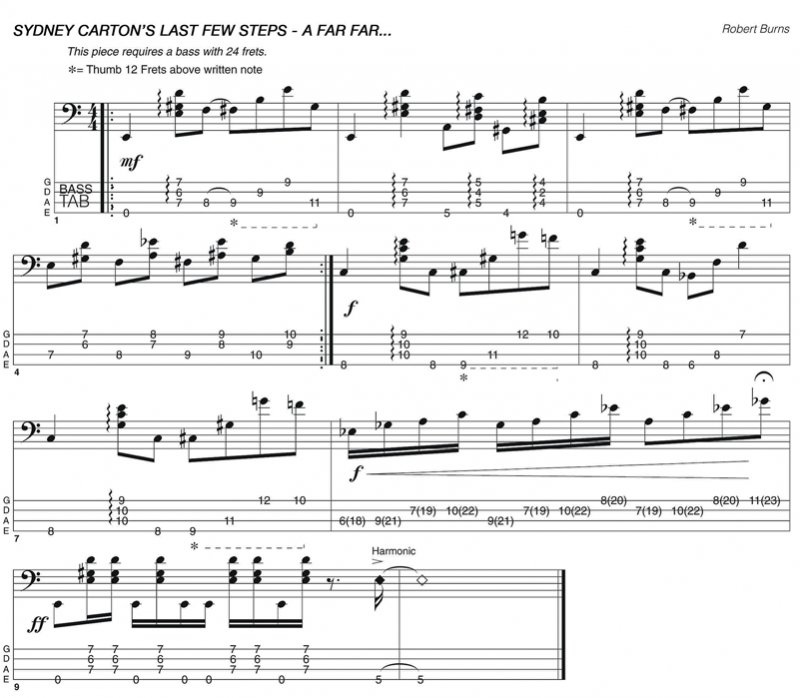Deep Thinking: Chord/Melody Technique
Deep Thinking: Chord/Melody Technique
You will be playing the lower notes with your thumb and picking the upper notes with your first and second fingers. The wiggly line in front of the first chord, an E7, means you have to play a broken chord with each note following the last in quick succession. You will notice that in bar 2, we descend (using the same picking hand technique) through a D7/A chord and a C#min7/G# chord. (I have put the fifth of the chord in the bass, just follow the tab, it’s not too hard!)
 Bar 3 returns to our E7 chord (as in bar 1) and then you move up the neck to play a melodic figure between frets 8 and 11. After thumbing an F at fret 8, string three, slide your first fretting finger from fret 8 to fret 9 and then you can bar across fret 9 with same finger for the B and E on strings two and one. Your little finger should play the G# at fret 11, string 3. Bar 4 is a thumb/pull chord movement in quavers from E to G.
Bar 3 returns to our E7 chord (as in bar 1) and then you move up the neck to play a melodic figure between frets 8 and 11. After thumbing an F at fret 8, string three, slide your first fretting finger from fret 8 to fret 9 and then you can bar across fret 9 with same finger for the B and E on strings two and one. Your little finger should play the G# at fret 11, string 3. Bar 4 is a thumb/pull chord movement in quavers from E to G.
After repeating the first four bars, we move to a C major chord (with the thumb/finger technique we have already used) but you have a choice in the second half of the bar to fret the note and tap exactly 12 frets above it (which will bring out its harmonic), or to play it as written. Bar 6 has the same C major chord but the notes following it are played in the places they are notated. Bar 7 is the same as bar 5, but bar 8 offers the same option for you to tap an octave above the note and produce its harmonic, or to play it as written. The node points (where to tap) are in brackets.
For bar 9, we return to the E7 chord and end on an E harmonic at fret 5, string four (or at fret 7, string three). And who was Sydney Carton? He was the hero in Dickens’ A Tale of Two Cities, whose last few steps were taken up some stairs before the French decapitated him! A great book to read between practice sessions!
Dr. Rob Burns is a senior lecturer in music at the University of Otago in Dunedin. As a former professional studio bassist in the UK, he performed and recorded with David Gilmour, Pete Townsend, Jerry Donahue, Isaac Hayes, Sam and Dave, James Burton, Ian Paice and Jon Lord, Eric Burdon and members of Abba. He played of the soundtracks of many UK television shows, such as Red Dwarf, Mr. Bean, Blackadder, Not the Nine OClock News and Alas Smith and Jones. Rob is currently a member of Dunedin bands Subject2change and The Verlaines.
